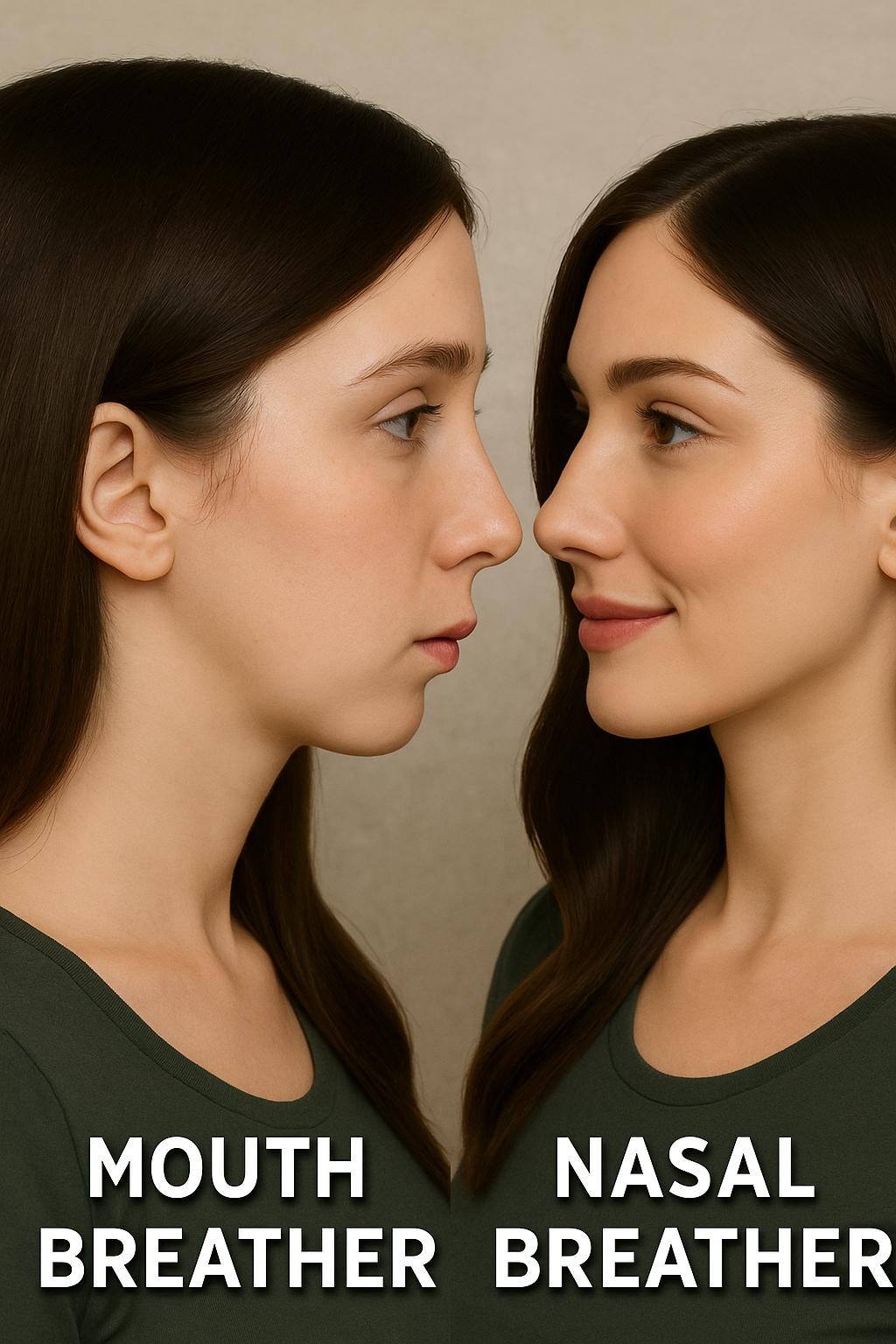Mouth Breathing¶
The Hidden Costs of Mouth Breathing
Breathing is something we do automatically—but how we breathe can have a profound impact on our overall health, development, and quality of life. At Goleta MyoWorks, we educate and empower individuals to understand the importance of nasal breathing and the consequences of habitual mouth breathing.
What Is Mouth Breathing?¶
Mouth breathing refers to the habit of breathing through the mouth instead of the nose, particularly during rest or sleep. While it may seem harmless, chronic mouth breathing—especially in children—can disrupt normal development and impact physical and mental health in significant ways.
The Impact on the Nervous System¶
Mouth breathing activates the sympathetic nervous system, also known as the "fight or flight" response. This part of the nervous system is designed to respond to danger by increasing heart rate, blood pressure, and alertness. While it's essential in emergencies, chronic activation can lead to issues such as:
- Increased anxiety and stress
- Poor sleep quality and insomnia
- Elevated heart rate and blood pressure
- Difficulty focusing and fatigue
- Increased risk for cavities and gum disease as mouth breathing causes a decrease in oral pH
- Increased risk of getting sick because when we breathe through our mouths the viruses and bacteria in the air are bypassing the purifying properties of the nasal passages.
In contrast, nasal breathing supports the parasympathetic nervous system, which promotes a "rest and digest" state. This is where healing, relaxation, and regeneration occur. Additionally, when we breathe through our noses, our bodies receive 18% more oxygen. This is because nasal breathing produces Nitric Oxide, a molecule that has anti-microbial, anti-viral and anti-inflammatory properties and is only produced when we breathe through our nose. When we breathe through our mouths, no Nitric Oxide is produced. Nasal breathing helps:
- Lower stress hormones
- Improve sleep and recovery
- Enhance digestion and immune function
- Decreased Anxiety
- Promote mental clarity and calm
Facial Growth and Development¶
For children, mouth breathing can significantly affect facial growth and dental development. When the mouth is open consistently, the tongue rests low in the mouth instead of on the palate. This altered tongue posture can lead to:
- Long, narrow face
- Recessed, or retrognathic chin
- High, narrow palate
- Dental crowding and malocclusion
These structural changes can also contribute to speech issues, poor airflow, and increased risk of sleep-disordered breathing, including obstructive sleep apnea.

Mouth breathing affects facial growth. When we breathe through out mouths from a young age, it causes the palate to grow up and into the nasal cavity. This causes a narrow airway, protruding nose, recessed chin, and health problems.
Nasal breathing and correct tongue posture promotes adequate airway space, wide jaws for straight teeth, and a balanced facial profile.
Why Nasal Breathing Matters¶
Nasal breathing is the body’s natural and preferred method of respiration. It acts as a built-in filtration system, humidifying and warming the air, filtering allergens and pathogens, and even increasing oxygen uptake thanks to the production of nitric oxide—a molecule that improves blood flow and cellular function.
Some of the key benefits of nasal breathing include:
- Better oxygen exchange
- Reduced risk of infection and allergies
- Balanced nervous system
- Improved facial and airway development in children
- Enhanced athletic and cognitive performance